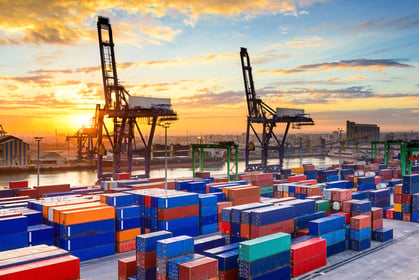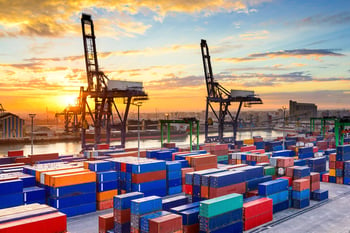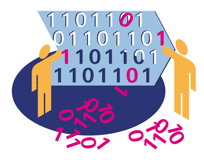What Are Digital Twins?
Brian Hoey - February 14, 2019

 At this point, if you’ve heard of digital twins, it’s likely that you’ve also heard them discussed in relation to the NASA’s Apollo 13 mission. For those of you who haven’t, the modern conception of a digital twin owes a lot to the structures that NASA put in place in case of exactly the sort of malfunctions that almost doomed the astronauts aboard Apollo 13. To wit, once John Swigert communicated to NASA that the spacecraft was experiencing an issue (in this case, an oxygen tank explosion had caused a cascade of system malfunctions), engineers and planners on earth were able to replicate the problems using a full-scale, physical model of the entire craft. Using this live, physical simulation of the systems operating in space, they were able to identify the issue and communicate a plan for repairs to the crew.
At this point, if you’ve heard of digital twins, it’s likely that you’ve also heard them discussed in relation to the NASA’s Apollo 13 mission. For those of you who haven’t, the modern conception of a digital twin owes a lot to the structures that NASA put in place in case of exactly the sort of malfunctions that almost doomed the astronauts aboard Apollo 13. To wit, once John Swigert communicated to NASA that the spacecraft was experiencing an issue (in this case, an oxygen tank explosion had caused a cascade of system malfunctions), engineers and planners on earth were able to replicate the problems using a full-scale, physical model of the entire craft. Using this live, physical simulation of the systems operating in space, they were able to identify the issue and communicate a plan for repairs to the crew.
This is, of course, one of history’s best-loved stories of human ingenuity—but it’s also the birth of the digital twin. NASA would go on to apply this “mirroring” system to digital environments, reaching a point where, rather than manipulating physical replicas of spacecrafts, they were able to simulate the action of those same crafts in digital space. Today, that technology isn’t just for space travel. Rather, it’s a reality of the modern supply chain, and the underpinning of modern “digital twins.”
Cyber-Physical Systems
So what, exactly, is a digital twin? Like NASA’s twin spacecraft, a digital twin is an exact replica of part or all of an object or process in the physical world. This can be as small as an individual component within a piece of machinery, or as large and as abstract as an entire supply chain. In the modern era, IoT (internet of things) devices make it possible not just to map out machinery and production floors into digital space, but to equip those digital reproductions with a constant flow of live operational data. In this way, manufacturers, for instance, are able to digitally monitor physical processes even as they're occurring, tracking usage and minding potential disruptions in real time from the comfort of a digital command tower networked to the factory floor.
For those of you with an interest in Industry 4.0, what we’re describing above is one way achieving what experts call a “cyber-physical” system. This means that the physical and digital worlds are able to interact in such a way as to add connectivity and create new sources of value. The creation of these systems can have significant ramifications across the entire value chain; in the case of an automotive manufacture with a digital twin set up for their job shop, for instance, cyber-physical interactions can make it possible not just to analyze existing processes with an eye towards increasing efficiency, but to actually implement the suggested optimizations automatically and analyze the results as they occur. By the same token, a transport planner with a cyber-physical logistics flow could optimize tour planning via the same workflow.
AI and Advanced Analytics
We noted above that supply chain managers and production planners utilizing digital twins could implement advanced analytics workflows to gain more value from their systems—reading that you might have wondered, “how exactly does that work?” Well, we’re glad you asked! In order to offer not just real-time monitoring but simulations of proposed changes or adjustments, an effective digital twin needs to be equipped with a base level of analytics power. For many companies trying to simulate the effects of changes in physical space, physics-based AI collects data from IoT sensors over time in order to perfect its predictive capabilities; for more abstract concepts like supply chain management the same thing happens, but without the need for any overtly physics-related.
The practical upshot here is that, by creating a digital twin of your factory or your supply chain, you can use advanced predictive and prescriptive analytics to improve demand sensing, bolster disruption management, create planning alignment between inventory and production workflows, and uncover areas of waste within your value chain. Where, in many digital environments, the preponderance of data doesn’t necessarily get leveraged in the most value-additive possible way, digital twins create a clear link between the data that’s being collected and the application of that data to particular processes in the physical world.
Putting Theory into Practice
So, let’s say you’re a logistics planner for a large automotive manufacturer, and you’ve created a digital twin of your entire supply chain, including factory floor operations (informed by IoT sensors that power live updates), supplier routes, and transport logistics processes/shipping routes. You’re experiencing a higher-than-average proportion of late shipments recently; how can your digital twin help you resolve this problem? First, by reexamining the digital records of your value chain processes for recent past, you should be able to identify the potential sources of the problem. You might, for instance, find that a higher than average number of factory floor breakdowns is eating through your buffer stock and leading to inventory shortages. In this case, you could use prescriptive analytics processes to identify any anomalies in your production processes (machines being used at different rates than usual, unexpected usages of some kind, etc.); then, you could consider possible changes to your production line usage, and test those changes out in advance on the digital version; thus, you can choose exactly the right set of changes to implement in order to optimize your processes and reduce disruptions.
Conversely, you might do some digging and realize that your production flows aren’t actually to blame. Rather, it’s a series of inefficiencies in the way your transport network is organized. In the same way we saw above, your digital twin can serve as a test chamber for trying out potential fixes. What happens if you move a particular hub or cross-dock? What happens if you eliminate a particular trade route or a particular 3PL partner from your network? Your digital twin can help you answer those questions with a degree of certainty that would be otherwise impossible. With that certainty, you can make changes and improvements that help you to reduce the problematic late deliveries, improve efficiency and building towards further optimization in the process.
LATEST POSTS
- Understand Circular Economy in The Manufacturing Industry
- How Can Industry 4.0 IT Integration Be Achieved Smoothly?
- The Significance of Order Sequencing in Discrete Manufacturing
- How to improve your Supply Chain Management: The Power of Control Towers
- Optimizing Human Resource Scheduling in Manufacturing: A Technological Approach



